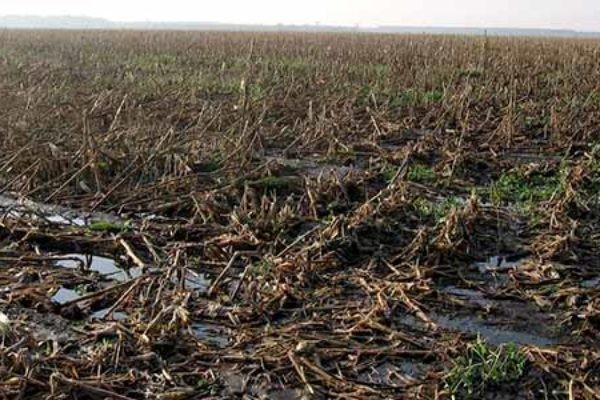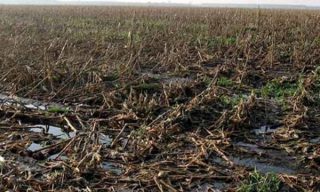In this historically active Hurricanes season across the Caribbean and Gulf Coasts of the US, we read and see the horrific damage to homes and properties across vast areas of land. The impact on Agriculture as an industry and farm families as a demographic is equal or greater in its impact; not the least of which is the effect on market prices to the consumer. While the oil refineries and retailers of gasoline have the ability to be ‘ahead’ of the squeeze by jacking prices at the pump to save their profits, farmers, unfortunately, don’t enjoy that same control over pricing as a way to buffer their losses.
Aside from the obvious loss of existing crops growing in the fields that are swept away by the winds and drown by the water; there is potential for even more significant, more permanent losses to their greatest resource…their land.
When precipitation is measured in feet, not inches over the course of 24-72 hours; the entire soil profile is changed. From denitrification to phosphorus runoff, the nutrients in the surface soil are washed away, converted to non-available forms, or leached through to the groundwater. The aerobic bacteria population of the surface soil, which is vital to the conversion of organic material to plant available nutrients are destroyed because of the waterlogged soils that result from such catastrophic events. Mass tonnages of soils are eroded off-site by the combination of wind and water; and when it’s all said and done, the soil looks nothing like it did before the event…at best, it’s saturated and compacted; at worst the surface and ‘A’ horizon could be literally ‘gone’.
How does the farmer recover from these events and bring their land back into production? The remarkable thing about farmers is that they have done it for generations before, and will undoubtedly do it again…not so much through bricks and mortar and wood, but from a common sense ‘oneness’ with the soil environment that is their livelihood. Unlike the buildings and houses that can be rebuilt with lumber and nails, the farmer’s recovery takes time..months, even years to bring the land back into the production level they depend on to pay the bills.
Fortunately, most of the developed countries in the world not only have assistance available to farmers of their own, but contribute to recovery efforts in countries that aren’t so affluent. Private foundations, multi-national organizations, and charitable groups all seem to step up their ‘game’ when those less fortunate need their assistance, whether due to hurricanes or any other catastrophic event.
Some key things to remember include:
- Patience – restoring productivity to a soil that has taken years to produce takes time. Avoid being in a hurry to begin clearing and tilling the soil. Wait for it to move from saturation to moisture field capacity so as to avoid compaction problems later. Utilize cover crops either as annual plow down or perennial sods so as to begin the process of ‘resetting’ the organic matter which has been washed away.
- Test your Soil – run a soil test and see where your nutrient balances are post-hurricane. Ideally, you have a pre-hurricane test to compare it to. Consult with your commodity specialist on how to adjust for pH, phosphorus, potassium, and other macronutrients in the soil specific to your crop(s).
- Work with your neighbor and dealers in your area – this could create an opportunity to share equipment that you don’t have, and perhaps don’t need all the time… things like tub grinders for mulching trees; land grading equipment; tillage implements; and tractors. Significant savings can Consult with your local government representative for cost-sharing, direct payments, and/or low-interest loans to help you get back up to full production.
These few pointers could not only save you a lot of money, but will help you recover more quickly, efficiently, and as a community.
By: John Deibel






